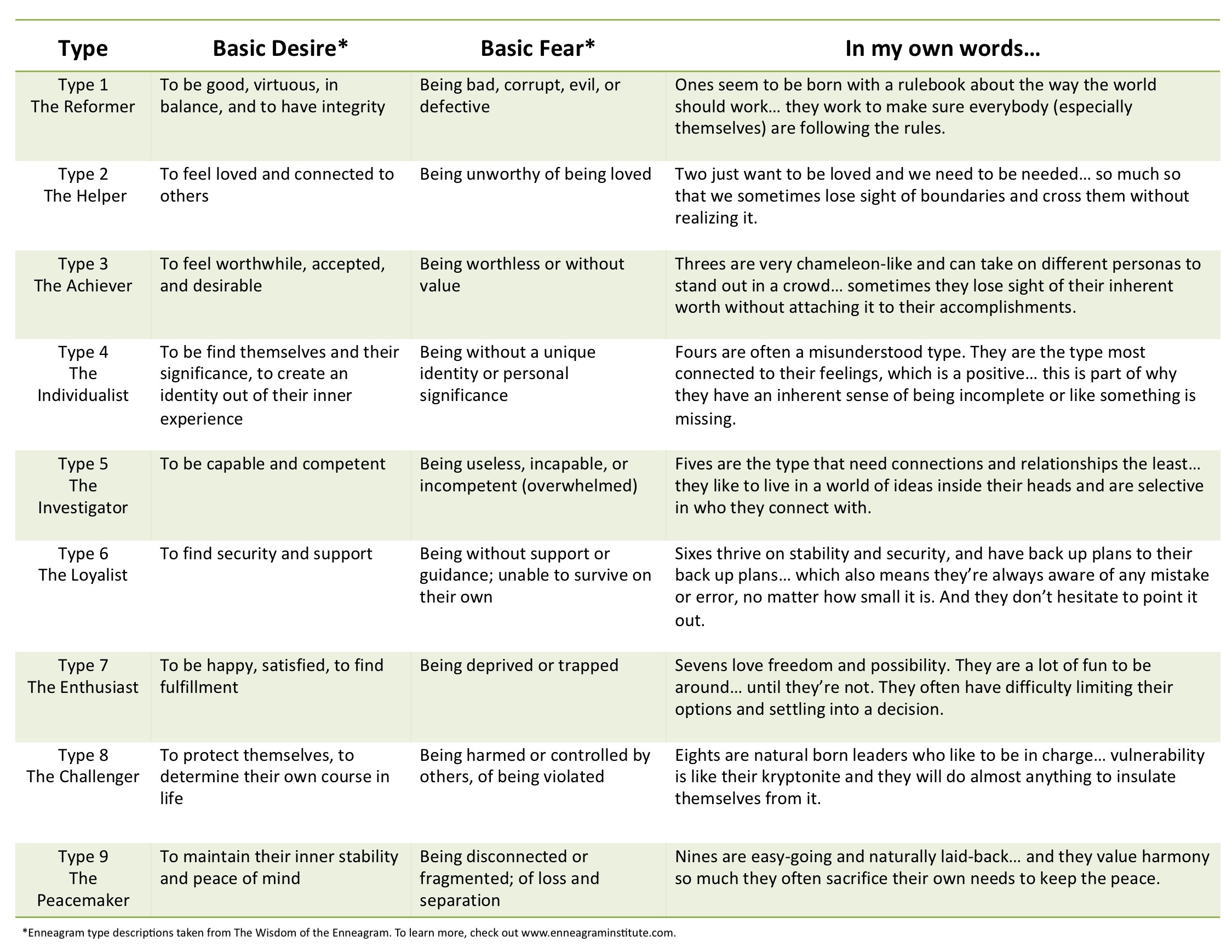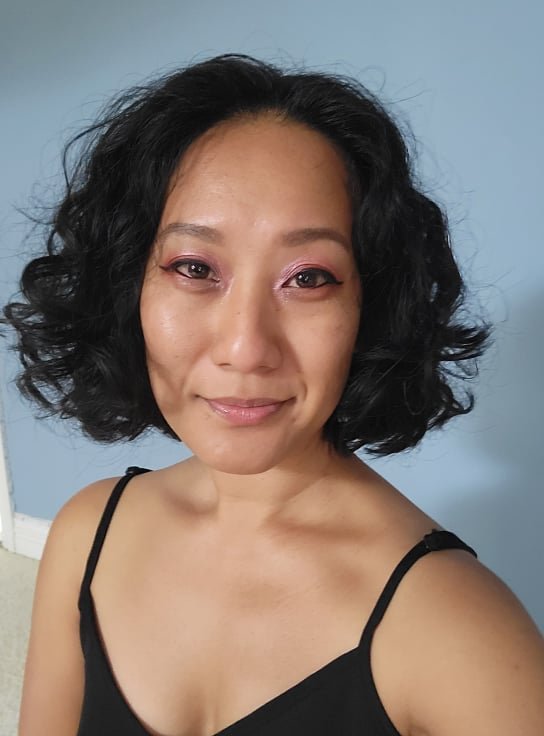I used to feel like something was wrong with me. I felt weird, broken, and damaged, which led to me to also feel isolated and unworthy of love. Little did I know that I was not the only person in the world feeling this way. As I got older, I learned that these are very common feelings that tons of people feel everyday. I also learned that there was a reason why I felt so unworthy for most of my life. At some point, I was introduced to something called the Enneagram and let me tell you… it changed my life.
Hi, I’m Christine and I’m a Two on the Enneagram.
What is the Enneagram?
The Wisdom of the Enneagram, my Enneagram bible, defines the Enneagram as, “a geometric figure that maps out the nine fundamental personality types of human nature and their complex interrelationships.” Essentially, it’s a personality system that identifies 9 distinct personality types and the core needs of each type. Though we have all 9 types within us, we are born with one type as our most dominant. Our dominant personality type functions as our internal operating system – it acts as the lens we see the world through and motivates our thoughts, feelings, and actions.
Have you ever wondered why you have certain relationship patterns or what makes you drawn to certain things in life? Why do you thrive on structure and stability… or why do you hate structure and stability? Well, the Enneagram gets to the heart of why we are the way we are.
Basic Desires and Basic Fears… We All Got ‘Em
The Enneagram is build on the core needs of each type – it identifies the basic desire (what we want in our heart of hearts) and the basic fear (what we’re most afraid of in the world) for each type.
When I learned that I was a Two, which is called The Helper, I learned that feeling connected to other people is my biggest desire and that being unlovable is my biggest fear. Suddenly, I understood what made me tick. This knowledge helped me see why relationships are so important to me, why I feel good about myself when I can help people, and why I can lose myself trying to get people to like me if I’m not careful.
A Spectrum of Behavior
One of my favorite things about the Enneagram is that it talks about behavior on a spectrum. In the Enneagram world, each type has typical behaviors that exist on a spectrum from Healthy → Average → Unhealthy. This means that our behavior – how we choose to show up in the world – isn’t a black and white issue. It’s not a matter of “good or bad”, but more a question of, “How healthy is it?”
I like this idea of the Health → Average → Unhealthy spectrum because it can help us have compassion and grace for ourselves. It’s not uncommon to slide up and down the spectrum on a daily basis. When we act in a way we’re not proud of, rather than believe it’s because we’re a bad person, we can recognize that perhaps we were in the lower-average or unhealthy part of the spectrum. And then we can figure out what we need to do to move up to the higher-average or healthy part.
Learning About Ourselves… and About Others
A lot of people take issue with any personality assessment because they don’t like to be labeled or put in a box. I can see that perspective, but I also offer another way to look at it. The Enneagram (and any personality tool, really) is designed to give you maximum self-awareness. It takes you on a deep dive into self-inquiry and introspection to help you really (really) understand yourself. It also helps you learn about other people in your life.
The 9 personality types are all very different, which tells us that there are 9 distinct ways to conceptualize the world. Once you understand the different types and know what makes a Six different from a Seven, or why a One might have some challenges with rigidity, or that a Nine may avoid conflict at all cost, then you can start to understand what makes other people tick. When you understand what makes them tick, you can have greater empathy and deeper compassion for them. You’re less likely to judge or dismiss them when they disagree with you. And most importantly, you can hold space for them to be who they truly are underneath the limiting beliefs of their basic fear, especially when they’ve slid down to the Unhealthy part of the spectrum!
The Essence of the Enneagram
The essence of the Enneagram isn’t to change who you are. It’s to help you know yourself better. By knowing your type, you can better understand what makes you tick, become more aware of the automatic reactions that might get you into trouble sometimes, and learn why you have certain patterns in your life.
Russ Hudson from The Enneagram Institute once said, “Your Enneagram is what shows up when you don’t.” What he meant by this was that our Enneagram type – good, bad, and otherwise – is who we are when we live life on auto-pilot. When we dive in to truly understand who we are and how we operate, we empower ourselves with self-awareness and gain access to choice, giving us the freedom to live our life in an intentional, authentic, and purposeful way.
This blog post offers a simple breakdown of the basics of the Enneagram, which I like to call Enneagram 101. If you’re interested in learning more about the Enneagram, reach out to me and let’s find some time to talk. If you want to find out your Enneagram type, click here to visit the Enneagram Institute’s testing center.
(Disclaimer: of course, you shouldn’t just guess someone’s type because we can’t know the internal operating system of someone else. It’s important that they take the test or define it for themselves. But when you do know someone’s dominant type, you can use that information to relate better to them.)
Christine Tomasello, M.S. is on a mission to spread the word of the Enneagram far and wide. She is a woman of many roles, wearing the hats of Coach, Consultant, Writer, and Therapist (Associate MFT, to be exact). Christine calls herself “the accidental entrepreneur” and “a recovering pessimist”, and is a proud INFP and Type Two on the Enneagram. Christine is based in San Diego, CA and works locally and virtually. You can learn more about Christine and her services at www.enneagramconsulting.com, www.leadershipfortherapists.com, and www.ghostwritingforhelpers.com.



